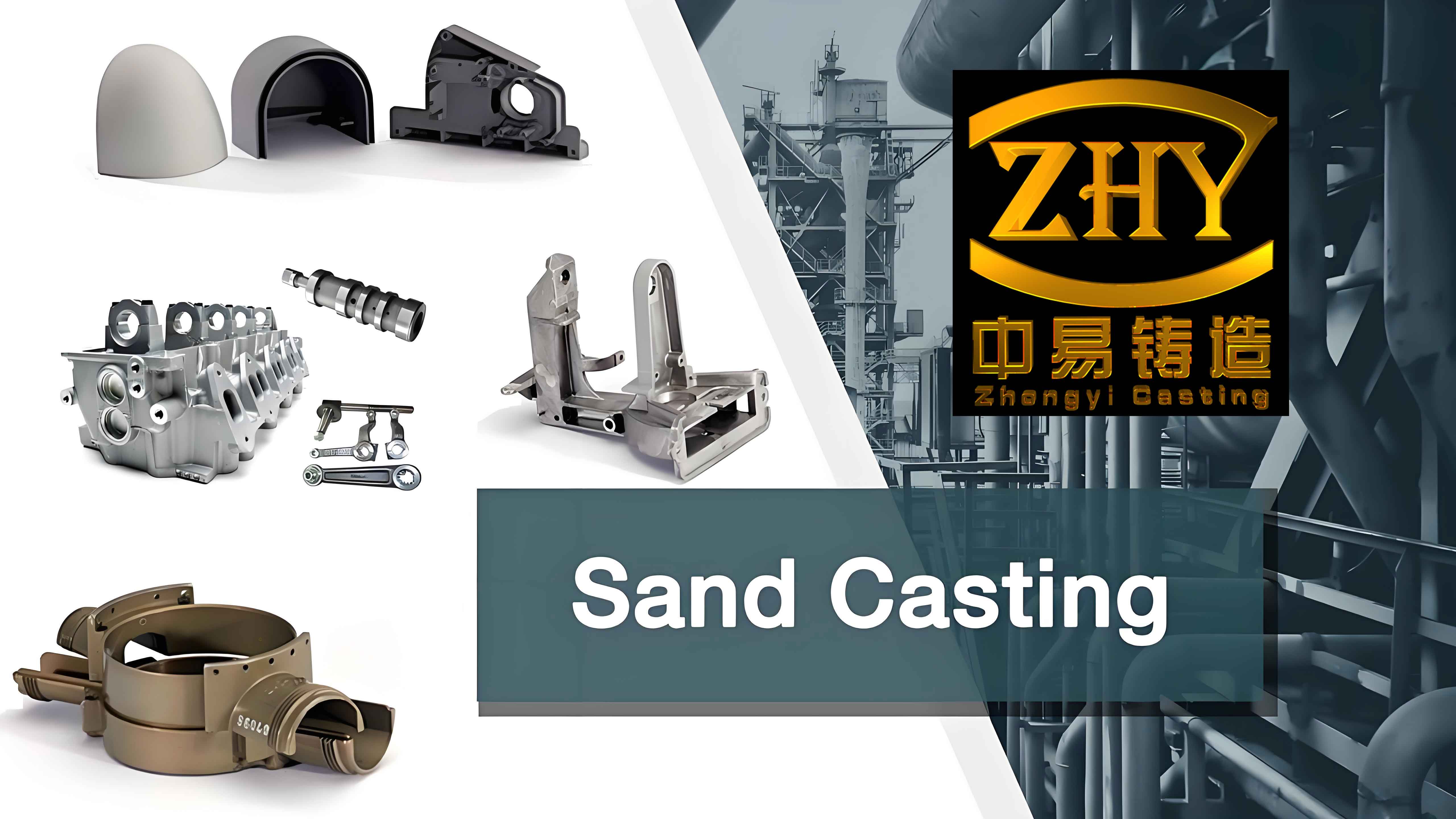This paper presents a comprehensive study on sand casting process design for HT250 rotary disc components, focusing on structural optimization and defect minimization through numerical simulations. The rotary disc (1040 mm × 375 mm × 158 mm) features complex geometries with thickness variations from 10 mm to 30 mm, requiring precise control of solidification patterns.

1. Process Design Fundamentals
The sand casting process was optimized using the following key parameters:
| Parameter | Value |
|---|---|
| Dimensional Tolerance | CT11 |
| Shrinkage Allowance | 0.9% |
| Mold Material | Furan resin-bonded sand |
| Coating Type | Alcohol-based coating |
The critical process yield was calculated using:
$$
\text{Yield} = \frac{W_{\text{casting}}}{W_{\text{casting}} + W_{\text{gating}} + W_{\text{riser}}} \times 100\%
$$
Where $W_{\text{casting}}$ = 174.45 kg, $W_{\text{gating}}$ = 85.25 kg, and $W_{\text{riser}}$ = 9.8 kg, resulting in 64.73% process yield.
2. Gating System Optimization
The stepped gating system with 10° tilt angle demonstrated superior performance:
| Gating Type | Filling Time (s) | Turbulence Index |
|---|---|---|
| Bottom Gating | 12.4 | 0.78 |
| Stepped Tilt Gating | 9.2 | 0.42 |
The optimal riser configuration followed Chvorinov’s rule:
$$
\left(\frac{V}{A}\right)_{\text{riser}} \geq 1.2 \times \left(\frac{V}{A}\right)_{\text{casting}}
$$
Where $V$ = volume and $A$ = surface area.
3. Solidification Control
Chill placement followed the thermal modulus relationship:
$$
M_c = \frac{\alpha_{\text{mold}}}{\alpha_{\text{chill}}} \times \frac{V}{A}
$$
Where $\alpha$ represents thermal diffusivity. Gray iron chills with $M_c$ = 1.8 showed 32% reduction in shrinkage defects.
4. Core System Design
The composite core system achieved 92% dimensional accuracy through:
- Tubular steel core reinforcements
- Modular core assembly
- Integrated venting channels
Core gas evolution was controlled using:
$$
Q_{\text{gas}} = k \times \rho_{\text{binder}} \times V_{\text{core}}
$$
Where $k$ = 0.18 mL/g for furan resin systems.
5. Process Validation
Field trials confirmed:
| Parameter | Result |
|---|---|
| Surface Finish | Ra 12.5 μm |
| Dimensional Accuracy | ±0.8 mm |
| Mechanical Properties | HB 210-230 |
The optimized sand casting process reduced machining allowances by 40% while maintaining Class B casting quality per ASTM A48 standards. This systematic approach demonstrates the effectiveness of integrated simulation and empirical validation in complex sand casting applications.
